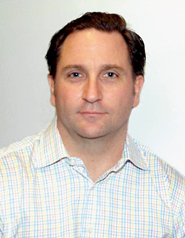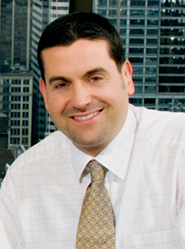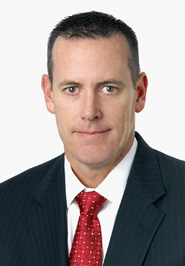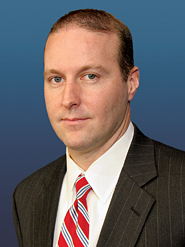Big brother is watching.
Using sophisticated monitoring and analysis techniques, bulge bracket brokers are starting to build profiles of the traders in their dark pools. They know who’s naughty and who’s nice, and they are using their newfound information to police the naughty and shore up the integrity of their trading systems.
In the U.S., Morgan Stanley, Barclays Capital, Deutsche Bank, and Bank of America Merrill Lynch have all developed tools to track trader behavior. Credit Suisse is doing the same in Europe.
Behind the initiatives is an attempt to appease buyside clients, many of whom worry they are getting gamed by their dark pool counterparties.
“We have built an analytical framework and reporting infrastructure around MS Pool that allows us to be proactive in monitoring how the participants are behaving,” Brad Johmann, head of research in Morgan Stanley’s electronic trading group, said of the broker’s pool. “If we do see a participant exhibiting certain behaviors, then we can take appropriate action.”
The behavior in question is using information gleaned in dark pools to turn a short-term profit. Often times, traders are able to discern price trends by trading against orders in these anonymous matching systems. They can then use this information to their advantage, which, in turn, works to the disadvantage of the original counterparty.
Many of these well-informed traders are professionals such as high-frequency market makers and statistical arbitrage shops. The HFT is the favorite bogeyman of the buyside, but, brokers say, well-armed institutional investors should also be feared.

Armed with this new intelligence, the brokers are using it in any or all of three ways. First, they are confronting their “toxic” participants and asking them to change their behavior, or else face expulsion.
Second, they are presenting the information to their customers—without disclosing identities—and allowing them to decide whether they want to trade with the sharp shooters. And, finally, they are incorporating the information into their algorithms, and letting the technology make the decision of which counterparty to trade with.
Taking a hard look at the trading practices of their dark pool participants is a relatively new step for the bulge bracket. Executives at Bank of America Merrill Lynch say they’ve been monitoring trader behavior for about three years, but others say they began just last year.
Previously, dark pool operators categorized their participants into various groups, allowing their customers to avoid those they considered harmful. But tracking every trade is a significant step forward.
To a certain extent, the bulge is catching up to the smaller agency brokers such as Liquidnet and BIDS Trading. These firms have always policed their members’ behavior, typically to make sure they are actually completing trades they started.
Execution Quality
Despite the lag, at least one buysider is encouraged by the big brokers’ efforts. The thinking behind it is “insightful,” said Enrico Cacciatore, a senior trader at ING Investment Management. “It forces the brokers to dive into their pools and provide this information to their clients—to show them what is going on in the pool,” Cacciatore added.
ING is likely a prime beneficiary of the trend, as it has built its own smart order router. It is intimately involved in where its trades get done. By contrast, most buysiders simply leave the routing decisions to their brokers.
But for another buyside trader, who also closely monitors his execution quality, there are better ways to avoid trouble than to rely on broker monitoring.

Tereck Fares, director of equity trading at Chicago Equity Partners, with about $3 billion in equities under management, contends more effective deterrents are to specify a minimum trade size as well as establish contra-party blacklists.
“We’ve imposed minimums for a very long time now,” Fares said, “because the toxic players don’t want to risk capital in amounts greater than 100 shares. So, that way, you’re already bypassing a lot of the junk. You don’t need to monitor. You need to recognize that some of the players bring nothing to the table except the illusion of liquidity.”
Many of the operators of dark pools disagree with Fares, contending the HFTs inject valuable liquidity into the system. At Barclays, for instance, part of the effort to track trader behavior in its LX pool is being done to show that labels don’t necessarily mean much.
Bill White, a former options trader and the architect of the firm’s market-making platform at the New York Stock Exchange, is now in charge of Barclays’ electronic trading group. When he started in the position early last year, he immediately abandoned the idea that simple categorization served to protect participants from predatory behavior.
Banning an HFT, for example, was ineffective because the HFT could simply re-enter the pool through another broker-dealer.
“They would leave and then come in through the back door,” White said. “So we realized that these front door thresholds were doing nothing for our clients.”
Moreover, White understood that smart or aggressive trading behavior was not limited to professionals. Traditional buyside trading may appear just as predatory as that of the often vilified high-frequency trader. A buysider using a top quality VWAP algorithm, that takes liquidity at precisely the right moments, for example, may look just as predatory as a short-term trading professional.
When it comes time to have a chat with an overly aggressive trading firm, no single group gets more calls than any other, White said. His crew has reprimanded HFTs for abusive latency arbitrage strategies. They have also warned buysiders against using too-clever algorithms.
“There are consistent phone calls to all groups,” White said, adding that some money management shops house quant groups alongside plain vanilla desks that may use sophisticated trading strategies.

While all four brokers take slightly different approaches to the task of monitoring trading activity, their analyses share one common input: market impact.
Because the proof is in the pudding, brokers analyze the performance of stocks traded by their dark pool customers in the seconds immediately after a trade takes place. If, over several trades, the price consistently moves in favor of one party and against the other, the more fortunate trader comes under scrutiny.
Price Impact
At Deutsche Bank, for instance, the electronic trading team tracks behavior in its Super X (“Super Cross”) dark pool over timescales ranging from milliseconds to multiple days. “We look at how much the price has moved relative to impact expectations and correlated securities,” says Jose Marques, global head of electronic equity trading at Deutsche Bank. “Every time we trade against a counterparty we learn something about them.”

For its part, BofA Merrill eschews simply looking for price changes, or reversions, immediately after a trade. It prefers to examine spreads. “You can’t assume the market is a perfect place where you won’t have some reversion,” said BofA Merrill executive Adam Inzirillo. “There will always be some level of it.”
Rather, BofA Merrill compares participant quotes against the national best bid and offer both one minute before and one minute after every trade. “This way we can see if there is any abnormal spread widening or spread compression taking place,” said Oliver Sung, a director on the execution consulting team within global execution services at BofA Merrill.
The idea is that “when you place an order, you should see very little deviation in the spread—the midpoint actually—before and after an execution,” Sung explained.
Both Merrill and Deutsche Bank use their technology to monitor the activity in their own pools as well as other venues, including exchanges. For Deutsche Bank, the functionality is built into its Super X Plus dark liquidity-seeking algorithm.
Deutsche Bank can only view its competitors’ pools in the aggregate, of course. It cannot observe the behavior of the individual participants.
Aggressive Takers
Besides price impact, the brokers also factor in other variables. “Anyone coming into our pool must display certain characteristics and continue to meet several requirements in order to remain a participant,” Inzirillo said. “We have strict guidelines.” Among about a dozen metrics, Merrill looks at average quote duration and the size people are willing to trade, for instance.
Most brokers also consider the nature of the liquidity provided when analyzing the activity in their pools. They look at whether a trader is providing liquidity or taking it.
Morgan Stanley will consult with participants it considers aggressive takers of liquidity. A common occurrence is for a trading firm to hit bids or lift offers in a dark pool and then do the same in the public markets with such speed and in such quantities that they move the price. Contra-parties in a dark pool could suffer an immediate loss from this type of behavior. Morgan Stanley focuses on a pattern of this behavior to maintain the integrity of MS POOL.
“Certain types of activity are not healthy for our pool or our clients,” Morgan Stanley’s Johmann said.
Consistency is a key factor when judging the behavior of a particular participant, Morgan Stanley execs say. A trader that consistently provides “good” liquidity will score high in the firm’s monthly surveys. One that consistently provides “bad” liquidity will score low.
For firms in the business of providing liquidity, Morgan Stanley prefers them to make markets across several names and not just trade when they want to. “We would prefer to see someone make a market in 100 names throughout the day, over someone who makes a market in one name and only trades in brief stretches of the day,” Johmann said.
Barclays distills a trader’s activity into a “modified” take ratio. The stat is calculated by dividing the number of times a participant takes liquidity by the number of times he supplies it. In general, a higher score signifies a more opportunistic trader. A lower score signifies a more benign or “good” provider of liquidity.
The calculation is modified, meaning it is not one of simple division. The ratio takes into consideration such factors as the size of the order and the liquidity of the stock. Taking liquidity in a very liquid name like the QQQ, for instance, does not factor into the calculation as much as taking liquidity in an illiquid name.
The broker combines that ratio with a measure of market impact, or short-term alpha, to create a profile of the trader.
The short-term alpha variable is calculated by dividing the price at which the trader bought or sold stock into the price of the stock shortly after the trade. A positive short-term alpha suggests an opportunistic trader. A negative score suggests a more benign trader. That trader is less concerned about short-term profit and more interested in just getting the trade done.
It is only by weighing the two together that an accurate picture of behavior emerges.
For instance, a trader that only takes liquidity may or may not be considered predatory. If he consistently makes money on every trade, or has a positive short-term alpha, then some might consider him a dangerous trading partner. But if he generally loses money on every trade – in other words he is trading even though the market is moving against him – he may be a desirable counterparty.
Likewise a trader with a low modified taker ratio may appear to be a friendly supplier of liquidity. But if prices in the market consistently go his way after his trades, he might appear to be too “informed” for some counterparties.

For Barclays, the end result is a scatter graph that divides the players into four quadrants: the toxic, the benign, and those in between. ING’s Cacciatore, for one, says the breakdown is useful.
“It gives me flexibility and some control over who I’m transacting with,” he said. “If I don’t want to trade in a particular quadrant, I don’t have to.”
While Morgan Stanley and Barclays wield a big stick when policing their pools, Deutsche Bank takes a more live-and-let-live approach. The broker does not threaten its HFTs with expulsion. Rather it counsels its buyside customers to allow its algorithm to decide when to trade and when not to trade with a potentially dangerous counterparty.
Marques maintains it’s a mistake to unilaterally block out trading with any single player or venue. In the past, clients that have done so, have found themselves cut off from very significant amounts of liquidity.
“There’s a time when it’s perfectly fine to trade with someone you might consider a toxic counterparty,” Marques said. “And that’s when you have an informational advantage. And, of course, there are other times when you definitely want to stay away.”
In general, Marques explains, it’s best to trade very stealthily when starting out with a fresh order, avoiding HFTs. But after completing about 60 percent or 70 percent of the trade, a trader can use his informational advantage and take liquidity aggressively.
“The dark pool ranking model is telling us which sources are benign across volatility and capitalization bins, both internally and externally,” Marques said. “So in the beginning, a participant will trade conservatively, and won’t leak information into the marketplace. But, as the trade evolves, the tactics might change to more aggressively seek liquidity from a broader cross section of sources. This is what good traders have historically done.”
The difference now, Marques added, is that Super-X Plus can do what a person cannot, that is manage this process dynamically across fifty plus venues.
So what do the market makers think of all this? At least one HFT executive is enthusiastic.
“I’d like to see the whole marketplace doing this,” Chris Concannon, a partner at Virtu Financial, a registered market-making firm, told Traders Magazine. “It’s the next wave of change and evolution. It’s an expansion of transaction cost analysis. Now, we’re going to do TCA at the counterparty level. And I’m okay with that.”

Concannon says he welcomes an analysis of the way he provides liquidity. “Tell me how I do,” he said, “and I’ll adjust. We provide customized liquidity. I can go bigger. I can narrow my spread. I can do mid-point. We have very customizable liquidity. So, I want to be scored. Everyone should be scored. We are headed into a world of TCA on steroids. And it’s a good world.”
SEE CHART: Bulge Bracket Dark Pools



